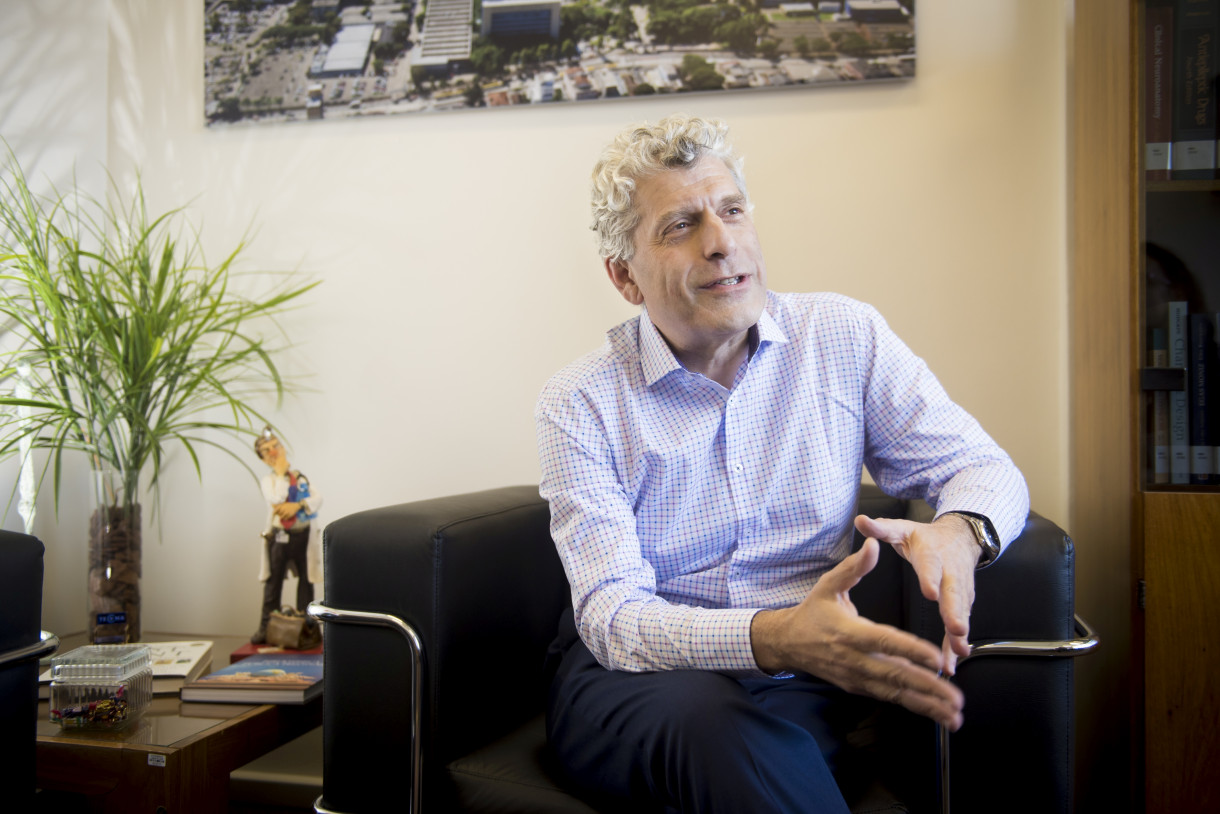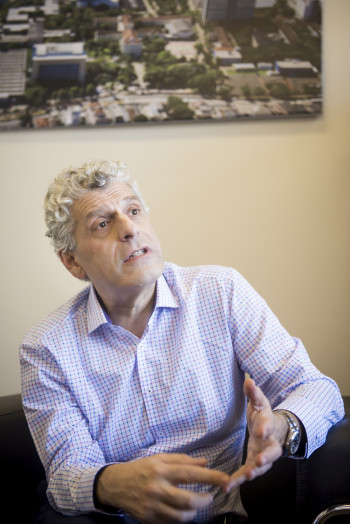A long road to beat cancer
Oncologist Nelson Kalil compares the treatment provided to patients in Brazil with that of the USA, where he works
Nelson Kalil has been living in America for over two decadesand he is very happy to see the advances in cancer treatment. However, the fact that Brazilian patients do not have universal access to new medications is na issue since, if they did, they would achieve complete remission. But this would be the next step to be taken. In his view, the country needs to focus primarily on the diagnosis and prevention of risk factors, including smoking addition, physical exercise and vaccines, such as HPV (human papillomavirus). “If the country does not have that in mind, in 20 years’ time things will not have changed”, warns he. Doctor can’t sit around and wait for patients in their offices; they will need to go after them, adds he.
Expanding treatment outreach is one of the challenges of the partnership between PUCRS and Fundação Nelson Kalil, his eponymous creation. Kalil, who completed his undergraduatedegree and residency at PUCRS, has been collecting donations from his US patients and from a network of specialists, as well as other entities, to be donated to São Lucas Hospital. They will also be used for the continuous development of doctors and School of Medicine professors in new diagnostic developments and individual treatments. American doctors from US universities maybe invited to deliver training sessions in Porto Alegre. Similarly, Brazilian physicians may be sent to the US. This Project is also expected to embrace the development of areas of excellence in Oncology and Neuro-oncology. The Senior Vice President, Jaderson Costa da Costa, believes that this initiative being successful can propel the development of this new attitude in Brazil.
Kalil completed residency programs in Internal medicine at Jackson Memorial Hospital/University of Miami and in Oncology and Hematology at the National Cancer Institute and National Heart, Lung, Blood Institute, National Institute of Health as well as Johns Hopkins Hospital. He never cut his ties with PUCRS. During his visit to the President’s Office, he gave an interview about the treatments and professional training.
“The number of patients given access to gold standard treatments in Brazil is too small. And the number of those signed up for clinical trials is even smaller.”
How do you integrate research and clinical practice?
This is very common in the US and this integration is actually expected. Even clinical doctors will do tests involving new drugs or will make efforts to validate them. This will keep them strongly connected to the pharmaceutical company to get protocols released and give patients access to medications, whether or not they are at a university. If a standard treatment is not right, patients may take part in experimental studies. That is important because 95% of the treatments are conducted in the medical offices. In Brazil, doctors must be in the academia, for it ensures quality and safety.
What costs are a patient expected to bear in the USA?
Health care plans cover the appointments as well as the FDAapproved medications and/or clinical routine protocols published and updated after consensus reached among the main academic centers. Additional costs, such as drug administration, nursing, etc. are to be included in the clinical protocol. Uninsured patients will be evaluated and, from 24 to 48 hours, will hear from the pharmaceutical company whether it will cover the medication. In case it does, the company will only cover a small percentage of the drug.
15, 20 years ago most patients would be internalized. Today, 99% of procedures are offered at outpatient care facilities. Why? Because of the high-quality level of stations and the medication. This avoids náusea and other complications, including infections. This makes is less costly. The doctors who design these protocols are FDA (Food and Drug Administration) researchers or, at least, are certified by the American Board of Internal Medicine. Today, the key points are the biological agents, target-therapy medications that will keep the cancer cells from growing in specific mutations, as well as immunotherapy. The levels of tolerance are exceptional. Former president Jimmy Carter is now over 90 years old. He had a very aggressive brain melanoma but now he continues working in his company as he has been on complete remission for a while. Without it, the survival rate would be of only a few weeks. What does the future hold? Fewer patients on radiotherapy and surgery, a lower rate of internalizations as well as a larger number of clinical protocols. Current discussions are centered around the ideal combination: biological agents, including radiotherapy with technological advances, such as proton therapy, which are now available in several academic centers.
In Brazil, the standard treatment is not always offered by the universal health care system.
Globalization gives people immediate access to new information, but data interpretation and therapeutic decisions need to be personalized by the patient and their doctor. The cost of medications is an issue. For instance, some target therapies or immunotherapy drugs might demand an investment from USD 150,000 to 200,000 per year per patient. The medication is either released by the pharmaceutical company, at no cost, or will not be released at all. In Brazil, it is very common to include advanced stage cancer patients in clinical trials, but result are palliative. This is a high cost with minimal return.
After approval, states need to acquire medications.
Drug approval is quite a bureaucratic issue. As an example, we can mention the breast cancer medications that have been used in the USA for more than 10 years and which Brazil is now trying to approve. We cannot doubt their efficacy. Patients are dying because they have no access to them. A balance needs to be reached between the cost and the response to the drug. But Brazil should focus primarily on the reduction of risk factors.
“Constant exchanges between professionals will enhance the technical skills and specialists from outside of the country will be able to see the potential of PUCRS. This will increase the number of donations.”
Is that why you work in the USA?
(Giggles.) There is another reason. Brazil offers very limited control even over standard drugs. In the USA, in the event of any complications, the system will acknowledge them immediately. It works in close connection with the pharmaceutical industry. In Brazil, I have no idea where they come from or how good they are in terms of quality. It is a different focus. Drugs need to be commercialized in the early stages of the disease rather than in the later stages. In the USA, patients have access to new drugs after they are approved by FDA and before the health insurance accepts them. This is important because of a record number of Hematology /Oncology – approved substances.
A shorter path.
And quick. Why this does not occur in Brazil is quite a cultural issue: doctors and pharmaceutical companies look at it from diferent perspectives. In the USA, if you want to attend a congress, the industry will not pay a first class ticket overseas. I will not take friends or family for a dinner to discuss cases. It is illegal. I am not there to sell medications to other doctors, but to discuss how to develop them. If something is wrong with a patient, I have to report it. This goes to the pharmaceutical company and to FDA. When the community is granted access to the drug, it is common to hear of effects we were unaware of. Patient discipline is essential too. Everyone will receive a manual about the drug and the disease. They have access to selected and accurate information at home.





